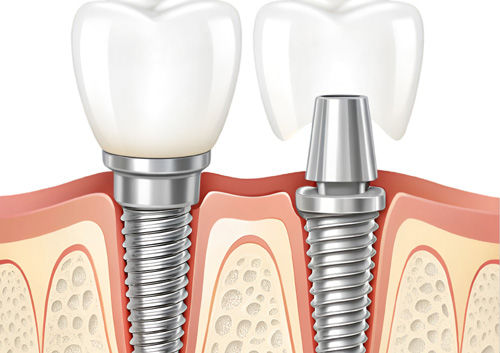Bone grafting serves as a critical foundation for successful dental implant procedures, addressing the fundamental challenge many patients face: inadequate jawbone density or volume. When teeth are missing for extended periods, the surrounding jawbone naturally deteriorates — a process called resorption — creating insufficient structure to securely anchor dental implants. This specialized procedure rebuilds the diminished bone, creating a solid foundation that ensures implant stability, longevity, and optimal aesthetic results for patients seeking permanent tooth replacement solutions.
At Elizabeth Oral Surgery Group, our highly trained oral surgeons specialize in various bone grafting techniques essential for dental implant success. Our team understands the complexity of jawbone restoration and utilizes advanced surgical techniques to prepare your mouth for dental implants even in cases of significant bone loss. With years of experience serving the Elizabeth, NJ community, we provide personalized treatment plans addressing your specific bone density challenges to ensure successful long-term implant outcomes.
Common Bone Grafting Procedures for Implant Preparation
Several specialized bone grafting procedures may be recommended depending on the location and extent of bone loss in your jaw. Understanding these options helps patients make informed decisions about their treatment plan.
Socket Preservation
When a tooth is extracted, the empty socket that remains can quickly lose bone volume and change shape as it heals. Socket preservation involves placing grafting material directly into the extraction site immediately after tooth removal to maintain the socket’s dimensions and prevent bone loss.
This proactive approach preserves the natural contour of your gums and jawbone, making future implant placement more straightforward and predictable. Studies show that without socket preservation, the alveolar ridge can lose up to 50% of its width during the first year after extraction—significantly complicating future implant placement.
Sinus Lift Procedures
The upper back jaw presents unique challenges for implant placement due to its proximity to the maxillary sinuses and typically lower bone density. Over time, the sinus floor can descend into areas where teeth were previously located, leaving insufficient bone height for implants.
A sinus lift (also called sinus augmentation) involves carefully lifting the sinus membrane and placing bone graft material in the created space. This procedure increases bone height in the upper jaw, creating adequate space for dental implants while maintaining the integrity of the sinus cavity. Patients typically need 4-9 months of healing before implant placement following a sinus lift procedure.
Recovery and Success Factors for Bone Grafting
The healing and integration period for bone grafts represents a critical phase of the implant process. Understanding what to expect during recovery helps patients actively participate in their treatment success.
Most patients experience mild to moderate discomfort for several days following bone graft surgery, which can typically be managed with prescribed pain medications and over-the-counter anti-inflammatories. Some swelling and bruising are normal and generally peak around 48-72 hours after surgery before gradually subsiding.
The integration period for bone grafts varies based on the type and location of the graft, ranging from 3-6 months for minor grafts to 6-9 months for more extensive procedures like sinus lifts. During this time, the body works to incorporate the grafting material and generate new, natural bone tissue in the augmented area.
Factors Affecting Graft Success
Several key factors influence the success rate of bone grafting procedures:
- Patient health conditions: Conditions like uncontrolled diabetes, autoimmune disorders, or smoking can significantly impair healing
- Surgical technique: Proper graft placement and fixation by experienced surgeons increases success rates
- Graft material selection: Choosing the appropriate grafting material for the specific clinical situation
- Postoperative care: Following all care instructions and attending follow-up appointments
With proper technique and patient compliance, bone grafting success rates for dental implant preparation exceed 95% in most clinical studies, making it a highly reliable procedure.
Schedule Your Consultation With Elizabeth Oral Surgery Group
Bone grafting technology continues to advance, making dental implants possible for patients who previously may not have been candidates due to insufficient bone volume. At Elizabeth Oral Surgery Group, our oral surgeons stay at the forefront of these developments to provide the most effective bone regeneration techniques available.
Elizabeth Oral Surgery Group has proudly served the Elizabeth, NJ community with exceptional oral surgery care for years, specializing in bone grafting and dental implant procedures. Our board-certified oral surgeons combine extensive training, experience, and the latest technology to deliver outstanding results for every patient. To learn if bone grafting might be necessary for your dental implant journey, contact us at (908) 663-5309 or schedule your consultation through our contact form.

